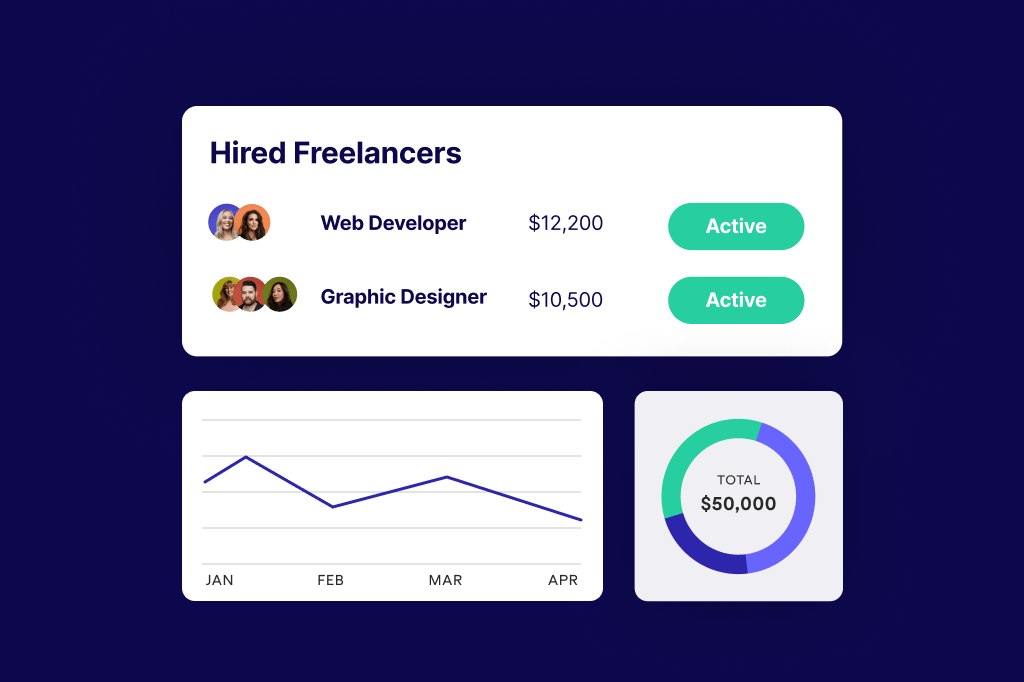Back in the day, hiring on demand wasn’t really a skill that businesses needed to understand. Candidates were primarily looking for full-time or part-time roles, and businesses accepted the lengthy cycle of recruitment, hiring and onboarding to gain in-house talent that filled pressing needs, even if they didn’t see a long-term use for those skills.
Today, the working landscape has changed dramatically, and companies often need to expand or contract their workforce overnight. Staff augmentation has become increasingly popular as a method of adding expertise to the team quickly, and an alternative to outsourcing employees, using freelancers, or relying on consultants. In fact, staff augmentation is now a $92.5B market. Here’s everything you need to know.
Explain Staff Augmentation to Me, Like I’m Five
When your existing in-house team doesn’t have all of the skills that you need for a particular project or task, staff augmentation is the process of hiring someone external to join the party. Unlike freelancers who work alone, staff augmentation means that the person will work alongside your existing team, using the same processes, tools, and office space – where relevant.
Staff augmentation allows a business to very quickly onboard specialists, without the commitment involved in hiring them as full-time or part-time employees. (That commitment can look like termination packages, benefits, taxes, and more – depending on your region.)
When Will Staff Augmentation Be the Right Fit for My Team?
You might be wondering what the difference is between hiring freelancers and staff augmentation, or how to choose when considering the question of staff augmentation vs outsourcing.
Both using freelance talent and outsourcing to an agency or consultancy relies on the people you hire having control over the way that they work, including elements such as their location, the hours they work, and the methods with which they complete their tasks. That means although we <3 freelancers, they don’t always fit the bill.
Let’s say for example you have a skilled legal team with a pressing deadline – an upcoming court case where you need all hands on deck. As the calendar date looms ever closer, the paralegals come to your desk with bad news, they aren’t going to make the deadline unless they get more people on the case. The average time to hire in the legal industry is 40 days, and anyway, you don’t need more full-time employees once this case is closed, so you consider your options. You don’t want to outsource the whole project, as it’s already being taken care of by your expert in-house team – they just need more people. Not only that, but the data is of a personal nature belonging to your client, it needs to be kept in-office. If you hire a freelancer, they may want to work from home, or work in the evenings, and this task relies on the tightest data privacy standards, as well as strong collaboration, which means everyone sitting around the same table.
This is a perfect use case for staff augmentation, where you can bring in one or more people who have legal expertise to join the team for a limited time. The transparent arrangement attracts individuals who are looking for one-off projects or short-term gigs, and who prefer the experience of working in-house rather than being a lone wolf.
What Kinds of Staff Augmentation are There?
The example that we gave above is one of skills-based staff augmentation. This is often used when dealing with highly sensitive data, or in professional services. However, this isn’t the only kind of staff augmentation. Commodity-based augmentation is usually related to manual or in-person labor, for example getting some extra elves to support Santa in a shopping mall in the week of Christmas, or adding more staff behind the scenes to set up a conference or an event.
In many cases, staff augmentation will involve bringing on specific niche expertise for a short-term project, one which doesn’t relate directly to the work that you do every day. If your business is in education, you will have no need for a web designer – unless of course, you’re creating a new website. Your retail store may have little reason to hire a video editor in-house, but they may augment their team with one when it’s time to release a seasonal advertisement.
How Fiverr Enterprise Streamlines Staff Augmentation
In many ways, staff augmentation is more complicated than hiring Gig workers. After all, the very nature of staff augmentation means that the people you hire need to work on your platforms and systems, and be regulatory compliant with any data privacy laws and processes that you adhere to in-house. However, you still want the benefits of being able to hit the ground running – especially if you’re using staff augmentation to fill a pressing need.
Fiverr Enterprise supports businesses in augmenting staff to join their in-house team in a number of core ways, including:
- Finding the right candidates, those with specific skills and proven experience in your field.
- Fast onboarding, including collecting documentation, e-signatures, KYC and background checks for compliance.
- Automated workflows for system access, credentials, and hitting the ground running with your chosen tools.
- The creation of clear policies and expectations around the roles and responsibilities of augmented staff.
- Monitoring of tasks, milestones and productivity, to track if augmented staff are closing gaps and meeting requirements.
- Accurate and on-time payments, according to freelancer expectations. You pay us, with one click.
Interested in staff augmentation, but never thought you could make it happen? Let us show you how easy it can be.
